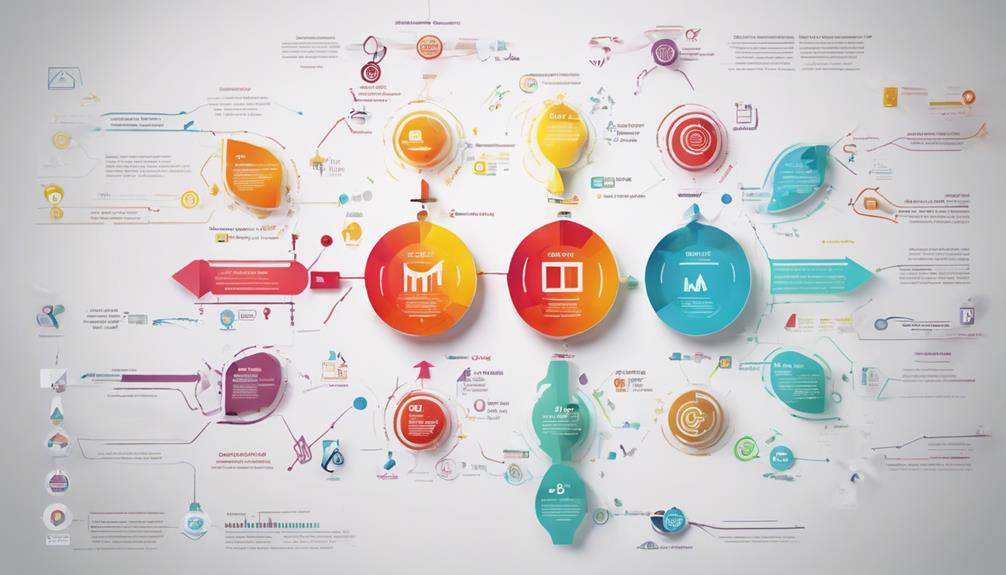To master your change measurement plan, you need clarity in goals, alignment in strategies, and consistency in execution. You're not just tracking progress; you're ensuring that every step you take is purposeful and aligns with your organizational objectives. As you consider the essential components of your plan, you might wonder how to effectively gather and analyze the right data. Understanding these intricacies can significantly impact your success, but the journey doesn't end there. What are the next steps you should take to refine your approach?
Significance of Change Measurement
In today's fast-paced organizational landscape, the significance of change measurement can't be overstated. It's essential for ensuring that the intended results of organizational changes are achieved rather than merely discussed.
By implementing a robust impact assessment framework, you can effectively evaluate the success of your initiatives. Utilizing project management tools can help streamline this process.
Engaging stakeholders throughout the process not only fosters transparency but also enhances buy-in, making it easier to adapt as needed. When you focus on key metrics, you streamline data collection and improve your decision-making capacity.
Realistic expectations about the time and effort involved in developing these metrics are crucial. Ultimately, effective change measurement empowers you to navigate transformations with confidence, ensuring your organization remains resilient and agile in a dynamic environment.
Essential Components of Planning
Successfully crafting a change measurement plan often hinges on clearly defining its essential components. Start by identifying alignment strategies that resonate with your organizational goals.
Establish clear measures and data sources to evaluate progress, ensuring you engage stakeholders throughout the process. Assign responsibilities for data collection and analysis to maintain accountability and streamline efforts.
Create a detailed schedule for data collection, outlining specific dates to keep everyone on track. Remember, effective stakeholder engagement is vital; keep communication lines open to foster collaboration and buy-in.
Setting Goals and Targets
Setting clear goals and targets is crucial for measuring the success of any change initiative. You need to ensure goal alignment across your team, fostering a unified direction. This prevents miscommunication and keeps everyone focused on the same objectives.
A well-defined client acquisition strategy can further enhance this alignment by providing a clear framework for success. Target specificity is equally important; articulate measurable outcomes within set timelines.
For instance, instead of aiming for "better customer satisfaction," specify a target like achieving a 10% increase in positive feedback within six months. This clarity not only guides your efforts but also allows you to track progress effectively.
Effective Data Collection Strategies
Effective data collection strategies are pivotal in ensuring that your measurement plan yields actionable insights. To achieve this, blend qualitative metrics with quantitative analysis.
Start by identifying relevant data sources that offer both types of information. Surveys and interviews can provide rich qualitative insights, while existing reports deliver hard numbers for analysis.
Establish clear responsibilities for collecting and analyzing data to streamline the process. Prioritize methods that minimize effort yet maximize data quality.
Continuous Monitoring and Adjustment
Continuous monitoring and adjustment are vital for ensuring that your change initiatives remain aligned with organizational goals.
By leveraging real time analytics, you can gain immediate insights into your progress and identify any deviations from your targets. This data-driven approach enables you to implement adaptive strategies that respond to emerging challenges and opportunities swiftly.
Regularly revisiting your metrics and adjusting your plans ensures that your efforts aren't only effective but also relevant. Engage your team in this ongoing process, fostering a culture of responsiveness and accountability.
When you prioritize continuous monitoring, you empower yourself to make informed decisions, ultimately steering your organization toward sustained success and greater freedom in achieving its objectives.
Frequently Asked Questions
How Do I Align My Change Measurement Plan With Organizational Goals?
To align your change measurement plan with organizational goals, ensure your measurement metrics directly reflect those goals. Regularly review progress, adjust as needed, and maintain open communication to foster a culture of accountability and success.
What Tools Can I Use for Tracking Metrics Effectively?
To track metrics effectively, you can use analytics software, performance dashboards, and reporting tools. Incorporate data visualization, feedback mechanisms, and metric benchmarks within collaborative platforms for automated tracking and strategic insights that enhance performance.
How Often Should I Review My Change Measurement Plan?
You should evaluate your change measurement plan regularly, ideally quarterly. This review process helps you assess progress, identify trends, and make necessary adjustments, ensuring your goals stay aligned with your organization's evolving needs and priorities.
Who Should Be Involved in Developing the Measurement Plan?
When developing the measurement plan, involve key stakeholders who can contribute valuable insights. Encourage team collaboration to ensure diverse perspectives, aligning everyone's roles toward achieving common goals and fostering a sense of ownership throughout the process.
What Challenges Might I Face When Implementing My Measurement Plan?
When implementing your measurement plan, you might face challenges like inconsistent data collection methods and low stakeholder engagement. Prioritizing clear communication and assigning specific responsibilities can help mitigate these issues and enhance overall effectiveness.
Final Thoughts
In the grand circus of organizational change, you've got to juggle your goals, strategies, and data like a seasoned performer. Sure, you could just wing it and hope for the best, but that's about as effective as a tightrope walker without a net. By embracing a solid change measurement plan, you're not just playing the game; you're setting the rules. So, let's not just measure change—let's master it, or we might as well trade our metrics for magic tricks.





